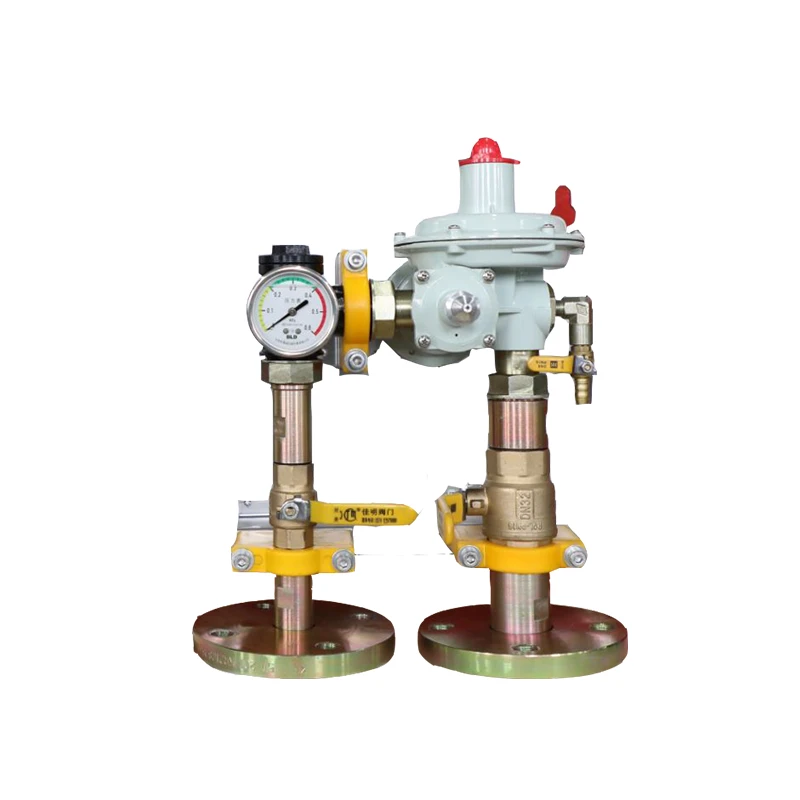
Oct . 12, 2024 13:36
Back to list
محطة تخفيض ضغط الغاز
Gas Pressure Reduction Station An Overview
Gas pressure reduction stations are essential components of gas distribution systems, ensuring the safe and efficient delivery of natural gas from high-pressure transmission networks to end-users, including residential, commercial, and industrial consumers. As natural gas is transported over long distances, it is transmitted at high pressure to minimize the volume of gas and ensure efficient transport. However, this high pressure is not suitable for consumption, necessitating the installation of pressure reduction stations.
Purpose and Functionality
The primary function of a gas pressure reduction station is to lower the pressure of the gas from the transmission line to a pressure suitable for distribution to consumers. This process involves various components designed to manipulate gas pressure safely and effectively.
When natural gas arrives at a reduction station, it enters through a series of valves and control devices. The first step involves the use of pressure regulating valves that help to modulate the gas pressure. These valves are typically equipped with sophisticated control systems that monitor the pressure and ensure it remains within safe limits.
In addition to regulating pressure, some stations may include filtration systems to remove impurities from the gas before it enters the distribution network. Impurities can include condensates, dust, and moisture, which can adversely affect the performance of downstream equipment and the quality of gas delivered to consumers.
Components of a Gas Pressure Reduction Station
A gas pressure reduction station typically includes several key components
1. Inlet Valve This valve controls the flow of gas into the reduction station and is usually a shut-off valve to ensure safe operation.
.
3. Filters As mentioned earlier, filters remove contaminants from the gas, safeguarding the integrity of the gas supply.
محطة تخفيض ضغط الغاز

4. Flow Meters These devices monitor the volume of gas flowing through the station, providing essential data for system management and billing purposes.
5. Shut-off Valves These are essential for safety, allowing operators to quickly isolate sections of the system in the event of a malfunction or emergency.
6. Control Systems Advanced reduction stations are equipped with automated control systems that monitor gas pressure, temperature, and flow, adjusting operations as necessary.
Safety Considerations
Safety is a paramount concern in the operation of gas pressure reduction stations. The high pressures involved pose potential risks, including leaks or explosions. Therefore, robust safety measures must be in place. This includes regular maintenance and inspection of equipment to identify and address potential issues before they lead to failures.
Moreover, the installation of emergency shut-off valves and automatic safety systems is critical. These systems can automatically respond to emergencies, such as a pressure surge or a gas leak, minimizing the risk of accidents.
Importance in the Energy Supply Chain
Gas pressure reduction stations play a vital role in the energy supply chain. By ensuring that natural gas is delivered at the correct pressure, they contribute to the overall efficiency of the gas distribution network. This efficiency translates to lower energy costs for consumers and supports the reliability of the energy supply.
As the demand for natural gas continues to grow, particularly as a cleaner alternative to other fossil fuels, the role of gas pressure reduction stations becomes even more crucial. They facilitate the transition to cleaner energy by ensuring that natural gas can be effectively utilized in homes, industries, and power generation facilities.
Conclusion
In summary, gas pressure reduction stations are indispensable in the energy infrastructure, serving to safely and efficiently adapt high-pressure gas distributions for consumer use. With ongoing advancements in technology and increased safety measures, these stations are set to play an even more significant role in meeting the future energy demands of a growing population. As we move towards a more sustainable future, understanding the function and importance of these stations is paramount for effective energy management and delivery.
Latest news
-
Safety Valve Spring-Loaded Design Overpressure ProtectionNewsJul.25,2025
-
Precision Voltage Regulator AC5 Accuracy Grade PerformanceNewsJul.25,2025
-
Natural Gas Pressure Regulating Skid Industrial Pipeline ApplicationsNewsJul.25,2025
-
Natural Gas Filter Stainless Steel Mesh Element DesignNewsJul.25,2025
-
Gas Pressure Regulator Valve Direct-Acting Spring-Loaded DesignNewsJul.25,2025
-
Decompression Equipment Multi-Stage Heat Exchange System DesignNewsJul.25,2025

